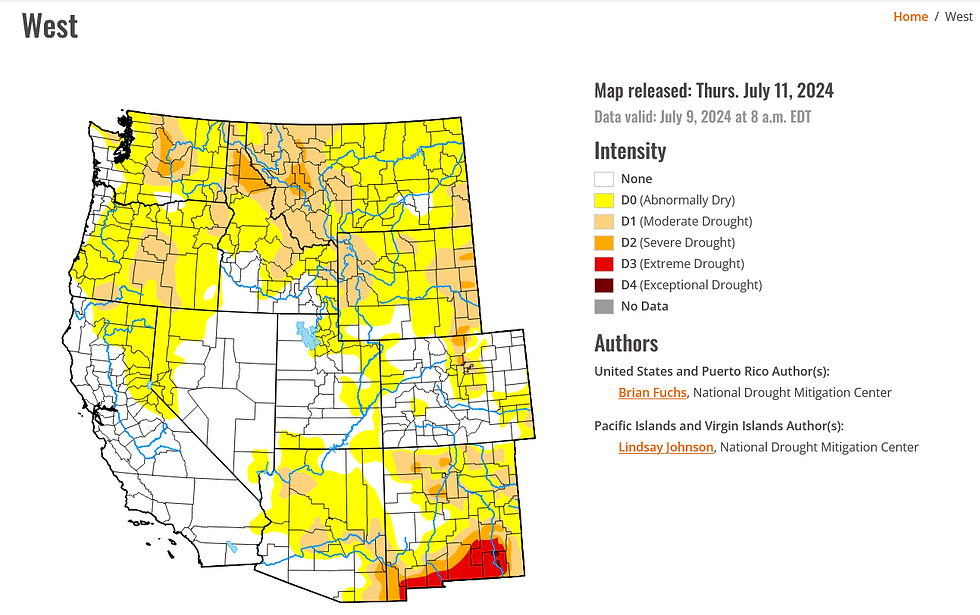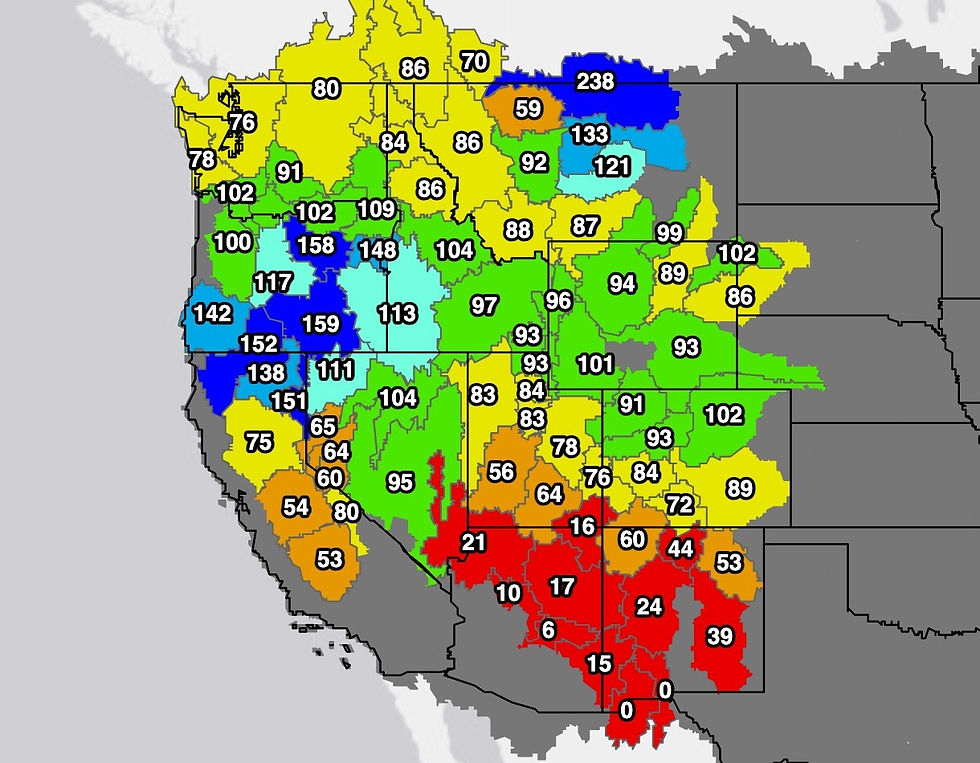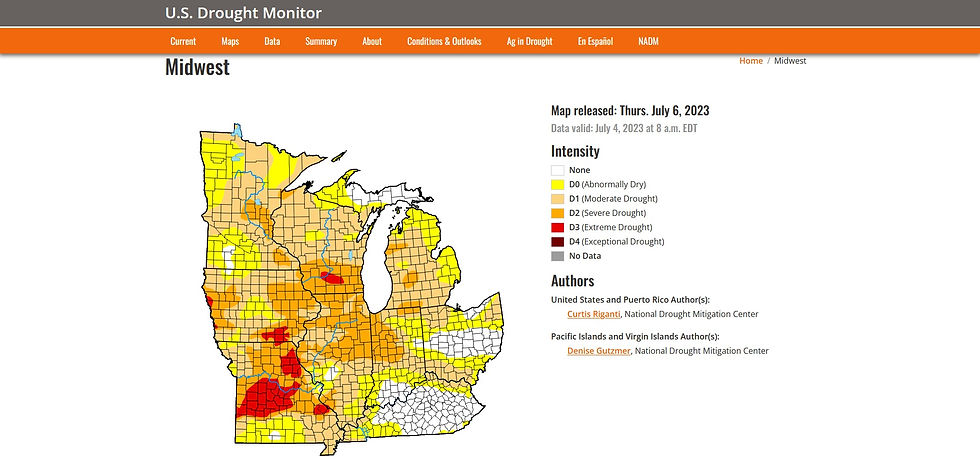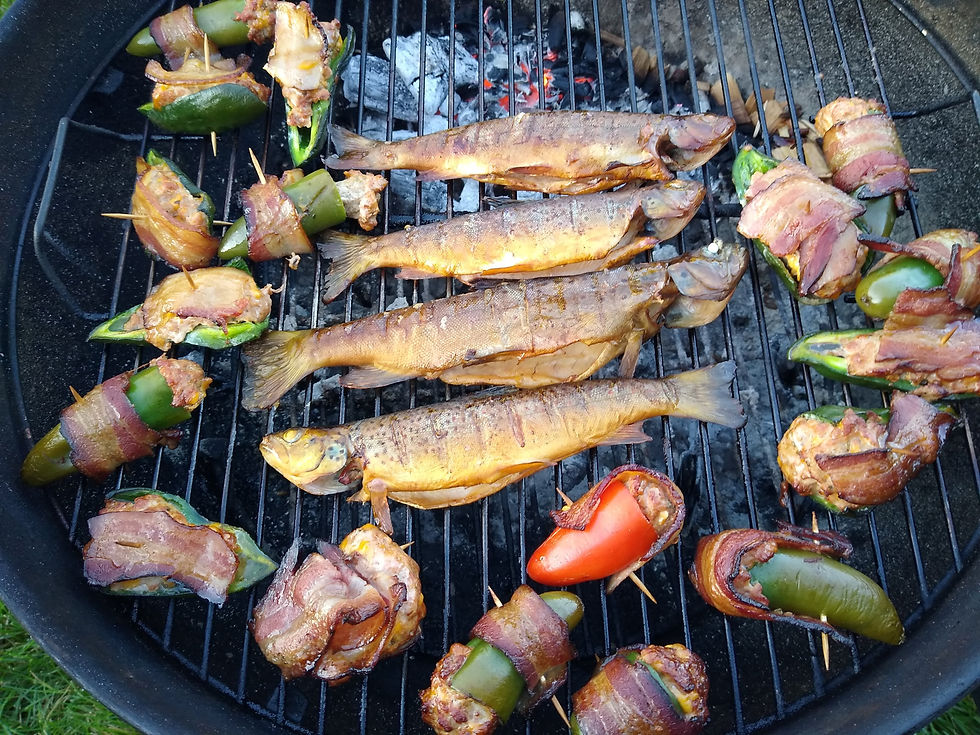Why we (Probably) don't need "Hoot Owl" restrictions in Wisconsin
- Jason G. Freund

- Jul 27, 2025
- 9 min read
If you are not familiar, "hoot owl" restrictions have been enacted in some Western states in response to low flows and warm river temperatures. "Hoot owl" laws restrict anglers from fishing during certain hours, typically from noon or early in the afternoon until midnight or early the next morning. The idea is that in their large, freestone rivers, water temperatures reach their maximums in the mid to late afternoon and cool starting late in the afternoon through the night. The same thing happens here.
The term “hoot owl” was adopted from the western US logging industry which encouraged tree harvest operations during morning hours (when “Hoot Owls” vocalize) to reduce fire risk during the drier hours of the day.

The cooling overnight is a significant part of the equation. These restrictions are a conservative measure to prevent against catch and release mortality due to high water temperatures. Looking at both these thermographs, it would appear that "hoot owl" restrictions are effective in preventing anglers from fishing when temperatures above 70F (about 19C) which are likely to lead to higher catch and release mortality.

These temperature graphs look distressing - and they are - but we have some similar streams here. Typically, we hope that people are smart enough to not fish streams when they are too warm. Of course, people are not always that smart, informed, or maybe care enough to know or do better. Stream temperatures and thermal issues is a topic I have written no shortage of posts about because I believe it to be as important an issue as there is in trout conservation. Without clean, cold water, we have no trout - it is really that simple.
Climate Change, Drought, and Water Temperatures
Yes, another post about climate change. Globally, a changing climate is the most significant issue that is facing trout. It is not all about warming temperatures - though they are certainly important - but it is also about how precipitation patterns have changed over time.

Not all the news around climate change is bad - ecological answers are rarely so simple. Our streams have more water, on average, than they did 30, 50, or more years in the past (maybe even just the past 10 or 15 years). This has helped prevent against some of the thermal effects of a warming climate. That precipitation has also been more variable and less dependable. The difference between high and low flows is much greater today, too. There is much more to read about this through the links above and elsewhere.
Dealing with Drought
If you have followed the news the least bit over the past decade or so, you have heard about water shortages in the Colorado River basin, California, and other places around the United States and the rest of the world. The Colorado River has been so low for so long we are referring to it as the Southwestern North America Megadrought and we have heard about how the downriver lakes may become "dead pools", too low to generate electricity because water levels will be below the turbine's intakes.

Drought is generally a bit more complex in the Western US than it is here in the Midwest. Western watersheds are dependent upon snowpack for much of their annual water budget. Here in the Midwest, our precipitation is more spread out, though we have been seeing a lot less snowfall in recent winters. For example, Bozeman, Montana, receives about 20 inches of precipitation a year, with a bit over 90 inches of snowfall (it depends on the water content but about 10 inches of snow = 1 inch of rainfall). In Viroqua, Wisconsin, nearly double the amount of precipitation falls (38 inches) but it receives about a third of Bozeman's snowfall (30 inches). I use Bozeman because I can get data for it - the mountains surrounding Bozeman (and other western towns), receive more snowfall than do the cities in the valleys.

In the West, it is not only trout that need the water from the melting snow but the farmers / ranchers are dependent upon snowfall. And, in the West, their water laws give those with "prior appropriations" the right to be the "first straw" taking from the rivers and their reservoirs. If spring and summer are not above average in precipitation, the river volumes decrease and are more prone to warming.

Wisconsin too has been effected by droughts. Certainly those that fish the Driftless trout streams have seen how low our streams have been coming out of the last couple of winters. We seem to be getting about the same amount of precipitation but little of it is coming as snowfall these last few years. We have had more consistent precipitation than has the Western U.S. over similar timeframes and our water laws help protect rivers better than do laws in most western states.

I write this post, in part, because I have heard grumblings that Wisconsin needed to enact these sorts of regulations these past few summers. For the record, few states have "hoot owl" restrictions. We had been experiencing about two or three years of drought and then the early part of the summer of 2024 happened and our fortunes changed. However, we were plenty dry in August and September 2024 - again, feast or famine. Drought, of course, is nothing new. It is part of the variability that comes with precipitation that has been exacerbated by climate change.

Those with just a little longer trout fishing memory than myself will remember the closure and the catch and release season. I got into trout fishing just after this drought and the closures.

The conditions were no doubt quite serious. My memories of those years were more about baseball and how "fast" the fields were. We, of course, have recovered from this drought, although there are stories of trout streams that are no longer trout streams. That is, trout were extirpated from a number of streams, particularly in northwestern Wisconsin, and they never returned. Some effects of the drought are still felt today but largely, most of the state recovered fairly quickly from the drought. Trout are generally more resilient than we often give them credit for.
The Biology of Warm Trout Streams
The effects of warm water temperatures - usually above about 20C (68F) to 23C (73.4F) - are fairly straightforward. As temperatures warm, dissolved oxygen decreases and trout metabolism increases, which makes it difficult for trout to meet them metabolic demands. And as temperatures increase, trout are unable to consume more energy than they expend. There are a lot of thoughts about how trout survive warm conditions. One is that they "hunker down" and withstand relatively short-lived warm periods. Another is that they move - sometimes quite far - to access colder water. There is an option somewhere in the middle where trout will move to nearby coldwater inputs. This is an option I see many trout on the West Fork of the Kickapoo taking. I know of a few springs where trout are often stacked in the middle of summer. The ethical angler leaves those fish be until water temperatures cool back down.

Under these elevated temperature conditions, survival is difficult and catch and release mortality is much higher. An interesting argument - and one that a couple of state resource agencies use - is that angler success is so low during the warmest part of the day that catch and release mortality is naturally low because fish simply won't bite and get hooked. Essentially, they argue that catch and release mortality under elevated conditions does not matter because anglers will not catch enough fish to make a difference. They are certainly not entirely wrong. This leads me to write about alternatives to hoot owl regulations.
Alternatives to Hoot Owl Restrictions
Even in the Western U.S., not all states use hoot owl closures to manage fisheries. And hoot owl restrictions in most states are limited to a relatively small number of larger, often more popular water bodies. A more extensive review was written by Matt Lubejko and Jerrod Parker for a Maine Department of Inland Fisheries & Wildlife Fisheries and Hatcheries Division publication, and I see no need to reinvent the wheel.

Why Wisconsin (Probably) Doesn't Need Hoot Owl Restrictions
Back to the title of this post, here is why I think Wisconsin (probably) does not need hoot owl restrictions.
Unlike much of the Western U.S., our fisheries are more widely dispersed. Montana, for example, bases their closures largely on USGS gaging stations and temperature measurements from streams. They have criteria for different trout species - in particulary native Cutthroat Trout (Oncorhynchus clarkii) and Bull Trout (Salvelinus confluentus) - and have criteria based on the popularity of the stream, thus the potential for harmful catch and release fishing. This would be difficult to do in Wisconsin because we have so many streams and so many fewer real-time temperature devices on those streams.
Western closures are also associated with irrigation withdrawals that reduce water volume and thus lead to elevated temperatures. This is, generally, not something we have to deal with in Wisconsin for a number of reasons, not the least of which is that we have much different water laws. Western water laws - the doctrine of prior appropriation - treat water rights much differently than do our laws. While ours are far from perfect - read about the Little Plover River - they generally do a better job of protecting minimum flows in streams.
A review of these restrictions shows that they are quite complex. At this point, the Wisconsin DNR is rather poorly funded (maybe I'll have to re-write this when I see a trout stamp and/or license increase for the first time in nearly two decades...) and this would be a hell of a burden on them. Going from memory here, but the fisheries division is down over 50 position from the early 2000's so the work is already being done by significantly fewer people.
We like to think that most anglers are smart enough to fish when and where stream temperatures are not going to cause significant mortality. And we understand that when temperatures are too warm, anglers are unlikely to catch enough trout to have a significant effect on the population. Yeah, I get that there is a fair number of assumptions in this point and I know from personal experience, a lot of anglers are fishing places they should not be fishing based on water temperatures.
Wisconsin attempts to rely upon outreach - that is, they hope that educating anglers will take care of many issues. Many states take this approach and our TU chapter (Facebook), the Drifless Angler (Facebook), Wisconsin Trout Unlimited (Facebook), and many others educate anglers, particularly through their social media accounts. I help the West Fork Sports Club install and maintain a stream gage and weather station on the West Fork, near Avalanche. This device should help inform anglers about water temperatures on one of the streams more affected by elevated temperatures. The old adage many Driftless anglers understand is, "Avoid the Forks (North Fork Bad Axe below Runge Hollow Lake and West Fork Kickapoo below Jersey Valley Lake) when summer hits".
Wisconsin has shown that, under dire circumstances, they are able and may be willing to close trout fisheries. I do not know if this something they would be willing to do again but as the news articles above showed, they have done so in cases of extreme drought.
These are my thoughts - you may well disagree - and that is fine. In large part, warm temperatures are nothing new on many water bodies and experienced anglers know and live with this. For example, the Wolf River, has (almost) always been too warm in July and August to fish for trout, so angler effort was concentrated during May and early June. We do an annual gathering in August on the Wolf where we fish for Smallmouth Bass. Smart anglers know how to find places with cold water, they get smarter by learning from their lack of success, or they quit fishing. That is, probably, as effective as enacting 'hoot owl' restrictions in a state as diverse as Wisconsin. But that is just my opinion.
For more on the topic of water temperatures and trout fishing, I have written no shortage of posts you can explore - including a recent post where was out on the morning of Sunday, June 22nd checking on water temperatures in the West Fork and Coon Creek watersheds.




A complicated issue has a simple answer. Restore the native riparian zone trees to the shorelines of our streams, rivers and lakes.